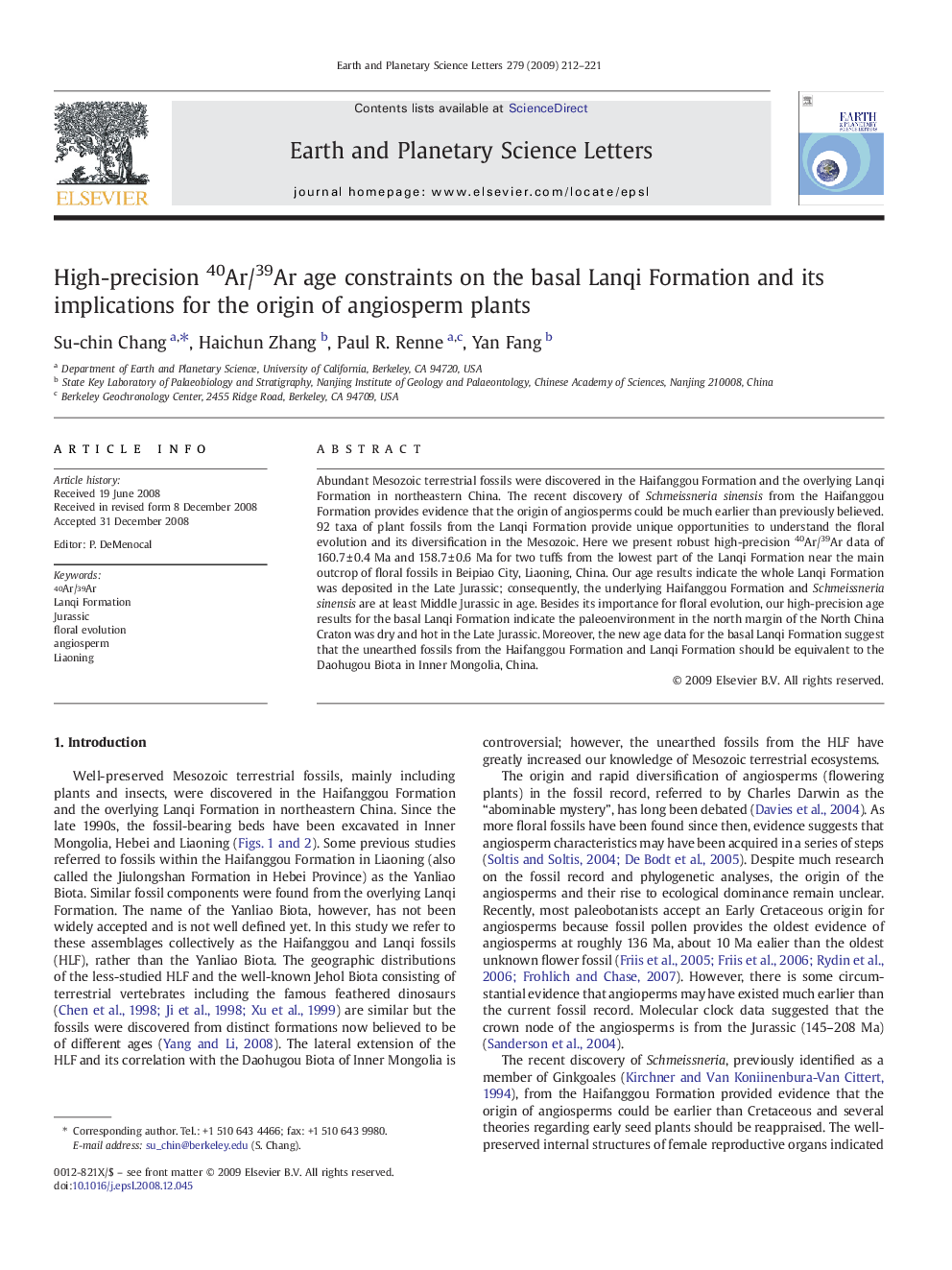| Article ID | Journal | Published Year | Pages | File Type |
|---|---|---|---|---|
| 4679275 | Earth and Planetary Science Letters | 2009 | 10 Pages |
Abundant Mesozoic terrestrial fossils were discovered in the Haifanggou Formation and the overlying Lanqi Formation in northeastern China. The recent discovery of Schmeissneria sinensis from the Haifanggou Formation provides evidence that the origin of angiosperms could be much earlier than previously believed. 92 taxa of plant fossils from the Lanqi Formation provide unique opportunities to understand the floral evolution and its diversification in the Mesozoic. Here we present robust high-precision 40Ar/39Ar data of 160.7 ± 0.4 Ma and 158.7 ± 0.6 Ma for two tuffs from the lowest part of the Lanqi Formation near the main outcrop of floral fossils in Beipiao City, Liaoning, China. Our age results indicate the whole Lanqi Formation was deposited in the Late Jurassic; consequently, the underlying Haifanggou Formation and Schmeissneria sinensis are at least Middle Jurassic in age. Besides its importance for floral evolution, our high-precision age results for the basal Lanqi Formation indicate the paleoenvironment in the north margin of the North China Craton was dry and hot in the Late Jurassic. Moreover, the new age data for the basal Lanqi Formation suggest that the unearthed fossils from the Haifanggou Formation and Lanqi Formation should be equivalent to the Daohugou Biota in Inner Mongolia, China.
